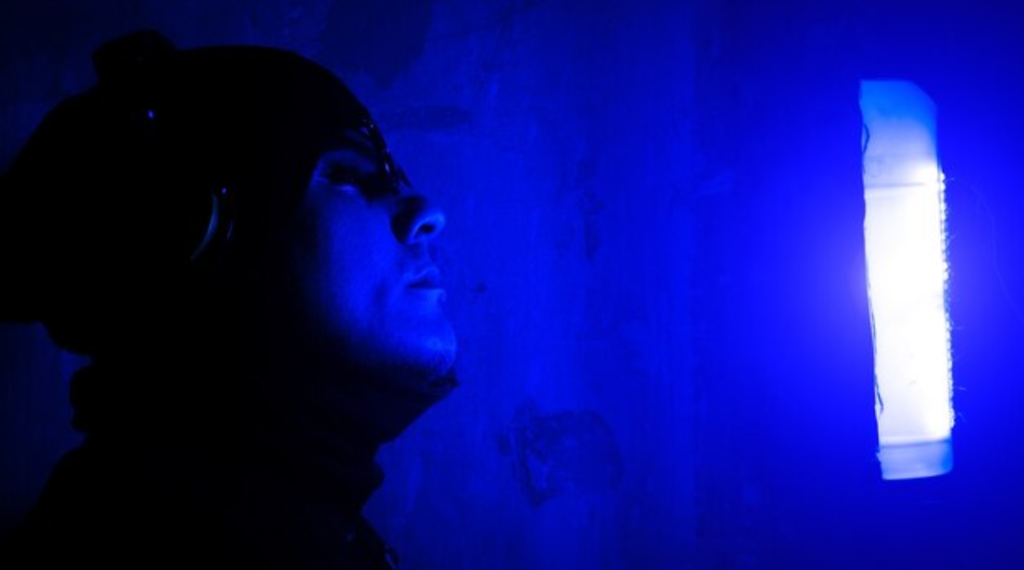Bright Under Black Light: Why White Objects Glow
Table of Contents
Black light, also known as ultraviolet (UV) light, causes certain materials to glow and appear bright under black light. This effect is especially noticeable with white objects, which seem to shine vibrantly when exposed to UV rays. In this article, we’ll explore the science behind this phenomenon and why white materials appear so much brighter under black light.

1. Understanding Black Light
Blacklight emits ultraviolet rays, which are not visible to the human eye. These UV rays have shorter wavelengths than visible light, typically ranging between 320 and 400 nanometers. While you can’t see UV light directly, it interacts with certain substances, causing them to fluoresce or glow.
Fluorescence occurs when a material absorbs UV light and emits it back as visible light, giving the glowing effect that’s commonly associated with black lights.
2. Why White Appears Brighter
White materials often contain substances known as optical brighteners or fluorescent whitening agents. These chemicals are added to products like laundry detergents, paper, and fabrics to make them appear whiter and brighter in normal light.
Under black light, these optical brighteners absorb UV rays and re-emit them as visible blue or violet light. This reaction creates an intense glowing effect, making white items stand out significantly more than other colors. Without these brighteners, white objects wouldn’t glow as dramatically.
3. Role of Optical Brighteners
Optical brighteners are synthetic compounds designed to enhance the whiteness of materials. They work by converting invisible UV light into visible light, particularly in the blue spectrum. This not only makes whites appear brighter under black light but also helps mask yellowing under normal lighting conditions.
For example:
- Clothing: Many fabrics are treated with optical brighteners during manufacturing.
- Laundry detergents: These contain brighteners to maintain the “crisp white” appearance of clothes.
- Paper products: High-quality paper often includes brighteners to give it a clean, bright finish.
4. Other Materials That Glow Under Black Light
While white materials tend to glow the brightest, other substances can fluoresce under black light as well. Examples include:
- Neon colors: Colors like green, pink, and yellow contain fluorescent pigments that react strongly to UV light.
- Certain minerals: Rocks and gemstones with natural fluorescent properties.
- Biological substances: Some bodily fluids and teeth may fluoresce due to their chemical composition.
5. Practical Applications of Black Light
The glowing effect of white under black light is used in several practical applications:
- Forensics: UV light is used to detect stains, fibers, or other evidence that fluoresces.
- Counterfeit detection: Black lights help verify the authenticity of currency or official documents with fluorescent markings.
- Art and entertainment: Black lights are popular in performances, theme parks, and parties to create glowing effects.
- Laundry testing: Optical brighteners are inspected using UV light to ensure consistent quality in fabrics.
FAQs
1. What makes white glow under black light?
White objects glow under black light due to optical brighteners, which absorb UV rays and emit visible light.
2. Do all white materials glow under black light?
No, only white materials treated with optical brighteners or naturally fluorescent substances will glow significantly.
3. Can black light be harmful to the eyes?
Extended exposure to UV light, including black light, can strain or harm the eyes. Always use caution when handling black lights.
4. Why don’t other colors glow as much as white under black light?
Most colors don’t contain optical brighteners or fluorescent pigments, so they don’t react as strongly to UV light.
5. Where are black lights commonly used?
Black lights are used in forensics, counterfeit detection, entertainment, and scientific research to detect fluorescence.
Conclusion
White materials appear brighter under black light because of the presence of optical brighteners, which absorb UV light and emit it as visible light. This phenomenon is rooted in the science of fluorescence, making black lights a fascinating tool for various uses. Whether in fashion, forensics, or entertainment, the glow of white under UV light is both practical and visually striking.
